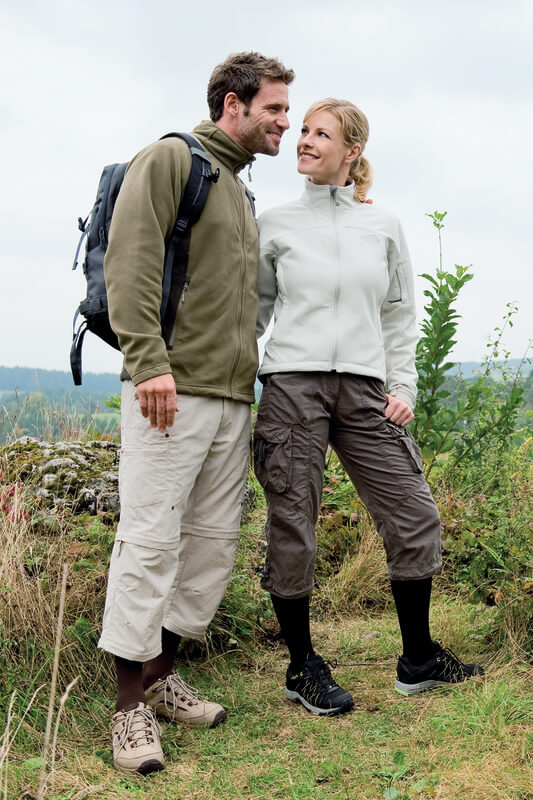Overview
As we continue to serve our patients throughout Central Oregon from the communities of Bend, Redmond, Prineville, Sisters, Madras, La Pine, and all communities in between we are regularly being asked about the benefits of wearing compression stockings, so we decided to write this blog post to help our patients gain a better understanding of the benefits of wearing compression stockings. To see the full range of compression stockings and compression socks please click here.
What are They?
Compression stockings or socks are specially made, snug-fitting, stretchy socks that gently squeeze your leg. Graduated compression or pressure stockings are tighter around your ankle and get looser as they move up your leg. Leg compression sleeves (or Leggings) are just the tube part, without the foot. You can buy them over the counter, but if your doctor prescribes them, your insurance may cover the cost. At Mariposa if insurance is going to be billed, we will take care of that for you.
Benefits of Wearing Compression Stockings/Socks
Generally speaking, wearing compression stockings can keep your legs from getting tired and achy. They can also ease swelling in your feet and ankles as well. They may even stop you from feeling light-headed or dizzy when you stand up. Basically, they improve your blood flow and they can lessen pain and swelling in your legs. People wear compression socks for comfort, to do better in sports, and to help prevent or treat serious medical conditions. For example:
Lymphedema
Lymphedema is a condition of the lymphatic system that causes lymphatic fluid to be retained in the limbs because of problems in the channels that typically carry it back toward the heart and into the bloodstream. Symptoms can range from slight swelling and a feeling of “heaviness” in the limbs to extreme deformity – also known as Elephantiasis. Compression garments are an essential part of helping control lymphedema. Wearing compression helps relieve early-stage fluid retention before it worsens. Compression can also aid in keeping patients active, which is a necessity, and keeping fluid from returning to affected limbs in more advanced cases.
Varicose Veins
About 40 percent of the US population may be affected by chronic venous insufficiency, a condition that can lead to more serious issues, including varicose veins. If you have chronic venous insufficiency, you typically experience heavy legs and swollen ankles at the end of the day. You may also experience pain or night cramps in your legs. These symptoms occur when the valves in your veins become damaged, and it becomes difficult for blood to move up your legs toward your heart against gravity. If venous conditions and related symptoms affect you, compression stockings can help.
Diabetes
Diabetes is a chronic illness that can require lifelong treatment and care. Many complications can occur, some of which affect the feet. If you have diabetes, you’re at risk of developing serious complications like foot infections. Not attending to diabetic foot care carefully and consistently can lead to amputation of the toes, feet, or even the entire leg below the knee. Practicing good foot care, such as choosing appropriate compression socks, is essential for preventing possible complications. If you are diabetic ask your doctor if wearing compression stockings may help manage your diabetes.
Who Should Consider Wearing Compression Stockings?
- Anybody struggling with one of the above health conditions.
- People who are recovering from a recent surgery.
- Those who can't leave their bed or have a hard time moving their legs.
- People who stand all day at work.
- Athletes.
- Pregnant women.
- People who spend long stretches of time on airplanes.
How do Compression Stockings Work?
The pressure these stockings put on your legs helps your blood vessels work better. The arteries that take oxygen-rich blood to your muscles can relax, so blood flows freely. The veins get a boost pushing blood back to your heart.
They also have different levels of pressure, measured in mmHg (millimeters of mercury). Stockings should feel snug, but not painfully tight. Mild compression, with lower numbers, is usually enough to keep you comfortable on your feet at work. You may need higher compression strengths to manage a serious health condition.
Types of Compression Stockings/Socks
Medical grade compression stockings are available in knee high, thigh high and waist (pantyhose) high lengths. The majority of people will benefit from knee high stockings. However, there are some people who need the additional compression above the knee that is delivered by thigh or waist high stockings. You should always follow your doctor’s direction on the length of stockings you wear. Another feature choice is open toe or closed toe. Because the compression in a stocking begins at the ankle, having open toe or closed toe is usually a personal preference. In some cases, your doctor might want you in a specific toe-type. You should always follow this direction when specified by your doctor. When the doctor leaves this decision in your hands, the choice usually is made by comfort. At Mariposa, we find that it is pretty even between those who prefer open toe and those who prefer closed toe. Some people find open toe stockings a bit easier to put on their feet (donning).
To learn more about the benefits of compression stockings click here.
Call us today at (541) 383-8085 to learn more about how compression stockings or socks may help you lead a healthier life!
